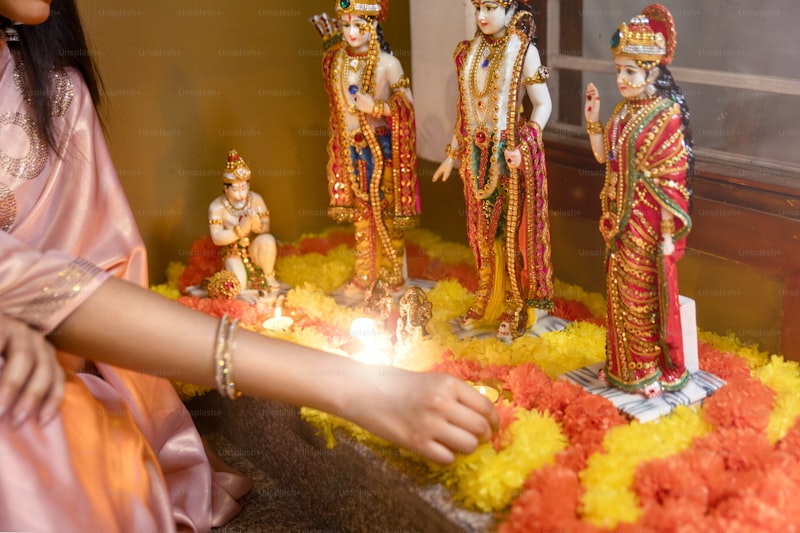Ceremonial Traditions Around the World: A Fascinating Journey Through Diverse Cultures
Ceremonial traditions around the world serve as a profound reflection of cultural heritage, societal values, and collective beliefs. From weddings to funerals, and from initiation rites to festivals, these ceremonies encapsulate a community's identity and historical narrative. In this article, we will explore various ceremonial traditions across different countries, examining their significance, unique practices, and the universal themes that connect them.
The Importance of Ceremonial Traditions
Ceremonial traditions are not merely rituals; they play a crucial role in maintaining cultural identity and fostering community bonds. They provide moments of joy, reflection, and closure, allowing individuals to mark significant life events. Understanding these traditions can offer valuable insights into the cultures from which they emerge.
Weddings: Celebrating Love Across Cultures
Weddings are one of the most celebrated ceremonies globally, each culture having its distinctive way of honoring the union of two individuals. For example, in India, weddings often span several days, incorporating elaborate rituals like the Mehendi, where intricate henna designs are applied to the bride's hands. In contrast, a traditional Japanese Shinto wedding features a serene ceremony in which the couple wears formal kimonos and participates in a sake-sharing ritual called san-san-kudo.
Funeral Rites: Honoring the Departed
While weddings celebrate beginnings, funeral rites provide closure and remembrance. In Mexico, the Día de los Muertos (Day of the Dead) is a vibrant celebration honoring deceased loved ones with altars, food, and colorful decorations. On the other hand, in China, traditional funerals focus on respect and maintaining social harmony, incorporating rituals like the burning of incense and offerings placed at altars to honor ancestors.
Festivals: A Time for Community and Celebration
Festivals often embody the essence of cultural identity. The Holi Festival in India is renowned for its vibrant colors and joyful atmosphere, symbolizing the arrival of spring and the triumph of good over evil. Meanwhile, Oktoberfest in Germany brings communities together to celebrate Bavarian culture with traditional food, beer, and music, creating a sense of unity among attendees.
Initiation Rites: Marking the Passage to Adulthood
Across cultures, initiation rites signify the transition from childhood to adulthood. In many African cultures, for example, the Mbunda initiation ceremony involves various tests and rituals, signifying readiness to join the adult community. In contrast, the Bar Mitzvah in Judaism marks a boy's coming of age at 13, celebrating his responsibilities within the Jewish community.
A Glimpse into Unique Ceremonial Practices
| Culture | Ritual | Significance |
| Indian | Mehendi | Beauty and joy before marriage |
| Japanese | Shinto Wedding | Harmony and purity |
| Mexican | Día de los Muertos | Celebration of life and death |
| Chinese | Traditional Funeral | Respect for ancestors |
| Indian | Holi Festival | Celebration of love and spring |
| German | Oktoberfest | Community unity and celebration |
| African | Mbunda Initiation | Transition to adulthood |
| Jewish | Bar Mitzvah | Acceptance of religious responsibilities |
Common Questions Around Ceremonial Traditions
As interest in ceremonial traditions grows, many people have questions. Here are some common queries:
- What is the significance of ceremonies in culture? Ceremonies often reflect societal values, strengthen community bonds, and mark significant life events.
- How do ceremonial traditions vary? Cultural differences shape rituals, resulting in unique practices and beliefs surrounding similar life events.
- What role do ceremonies play in personal identity? They reinforce an individual's cultural background and foster a sense of belonging within a community.
Preserving Ceremonial Traditions
In today's rapidly changing world, many traditional ceremonies face the threat of extinction due to globalization and modernization. It is crucial to document, celebrate, and pass on these traditions to future generations. Communities can organize workshops, festivals, and educational programs to promote awareness of their ceremonial legacies. Moreover, individuals can engage with their cultural roots by participating in local ceremonies and sharing their experiences with others.
Conclusion: Embracing Diversity Through Ceremonial Traditions
Ceremonial traditions around the world offer a fascinating glimpse into the values, beliefs, and identities of various cultures. By exploring and participating in these rituals, we not only honor the communities they represent but also enrich our own understanding of what it means to be human. As globalization progresses, preserving these traditions becomes essential, reminding us of the beauty of diversity and the shared experiences that connect us all.
Remember to engage with your own cultural traditions, and if you have the opportunity, participate in others. These experiences can broaden your perspective and deepen your appreciation for the rich tapestry of human life.
